Born on February 1, 1801, in Lancashire, England, Thomas Cole emigrated to the United States with his family in 1818. The family moved in 1819 to Steubenville, Ohio where he learned to use oil paint from an itinerant artist. Cole essentially was a self-taught portrait artist. He began drawing from nature in 1823, while he was in Pittsburgh. Later that year he studied at the Pennsylvania Academy of Fine Arts in Philadelphia. Moving to New York City in 1825, Cole became enamored with the natural beauty of the Catskills. He exhibited a small collection of Catskill landscapes in October 1825 in New York City. He was discovered by Asher B. Durand, a well-respected artist and engraver. Durand helped organize the National Academy of Design in New York City. Thomas Cole became a member in 1826.
Cole’s landscape paintings were supported by a number of influential patrons including Robert Gilmore, Jr. (1774-1848) of Baltimore. He was a merchant and shipowner with the East-India company, and one of America’s most important patrons and collectors of art before 1850. Another Cole patron was Samuel Ward, Sr. (1786-1839), a New York City banker and philanthropist. Cole wrote: “I have received a noble commission from Samuel Ward, a commission to paint a Series of Pictures the plan of which I conceived several years since and had an opportunity of presenting to him in the Spring. The Subject is to execute in four pictures about 6 ft. 6 in. or 7 ft. long each, and is entitled Voyage of Life…The subject is an allegorical one, but perfectly intelligible & I think capable to making a strong and moral religious impression.” The commission price was $5000.
Cole’s theme divided the journey into “Childhood,” “Youth,” “Manhood,” and “Old Age.” “Childhood” was begun in September 1839. Cole was determined that his paintings should create a “higher style of landscape” reflecting a moral and religious message. The four landscapes follow a river flowing through the same landscape and the four seasons. “Childhood” depicts an abundance of spring flowers in a sun filled landscape. An elegant gold vessel emerges from a dark cave deep in a mountain that Cole describes as “emblematic of our earthly origins, and the mysterious Past.”
A radiant guardian angel is at the tiller of the vessel. The figurehead is a gold angel holding an hourglass, representing time. Several sculpted gold angels form the body of the vessel. A joyful infant sits among the flowers, arms raised and looking forward. The river flows smoothy toward the viewer.
“Youth” (painted in early 1840) depicts a young man holding the tiller of the gold vessel. The guardian angel stands on the shore, waving good-bye. The river winds through the landscape which expands into a rich summer panorama. The clouds above form a glowing white temple. Cole described the scene: “The scenery of the picture–its clear stream, its lofty trees, its towering mountains, its unbound distance, and transparent atmosphere—figure forth the romantic beauty of youthful imaginings, when the mind elevates the mean and common in the magnificent, before experience teaches what is the Real.”
“Manhood” was painted in the summer and fall of 1840. The man is carried by rushing and choppy water from the cave where he floated peacefully as a child. Cole wrote about the scene: “The helm of the boat is gone; the voyager has lost control of his life. The angel looks down from the clouds as he [the man] is whirled forward toward violent rapids and bare, fractured rocks. Only divine inspiration can save the voyager from a tragic fate.” The man kneels and prays. The figurehead still holds the hourglass. Cole’s fall landscape is under a dark and stormy sky. However, the sun breaks through in the distance.
The river is calm. The storm clouds part in the distance to reveal an angel and the rising sun. The old man rides in the vessel which is battered and missing the figurehead. The edge of the river has been reached, and the old man has passed by the rocky landscape. The heavens are opening. For Cole it was the man’s Christian faith that saved him: “The chains of corporal existence are falling away; and already the mind has glimpses of immortal life.”
Pointing toward to heavenly light, the guardian angel is with the old man. His arms wide-spread, he thankfully accepts the forgiveness he perceives in the distance.
Cole’s patron Samuel Ward, Sr. died in 1839, before the commission was completed. Ward’s heirs created difficulties for Cole about showing the work in a public exhibition. Cole went to Rome during the winter of 1841-42, and there painted a second set of the series. Cole wrote about the difficult circumstances: “I shall take the series to England & shall endeavour to dispose of them there. I have but little hope of doing so. The fashionable taste (if I may dignify if with such a name) is for works of another order, pictures without ideas, mere gaudy display of color and Chiro Scuro without meaning, showy things for the eye. If I do not dispose of my pictures in England, I must take them home and hang them in my own rooms & content myself with the conviction that the time will come when they will be more valued.”
Cole and his good friend William Cullen Bryant, poet and editor of the New York Evening Post, agreed that “God’s nature” was a refuge from the industrialization and ugliness that was occurring in American cities. The series has been interpreted by historians as Cole’s response to “Manifest Destiny.” The term coined in1845 expressed the belief that the United States was destined by God to conquer the continent. For Cole and Bryant, and others like them, this ultimately meant to civilize nature.
“If I live to be old enough. I may sit down under some bush, the last left in the utilitarian world, and feel thankful that intellect in its march has spared one vestige of an ancient forest for me to die by.” (Thomas Cole)
Beverly Hall Smith was a professor of art history for 40 years. Since retiring with her husband Kurt to Chestertown in 2014, she has taught art history classes at WC-ALL. She is also an artist whose work is sometimes in exhibitions at Chestertown RiverArts and she paints sets for the Garfield Center for the Arts.
NOTE: When Cole returned to American, the second set of paintings were a great success when they were exhibited. The first set is now in the Munson-William-Proctor Art Institute in Utica, New York. The second set, described in this article, hangs in the National Gallery, Washington, D.C.
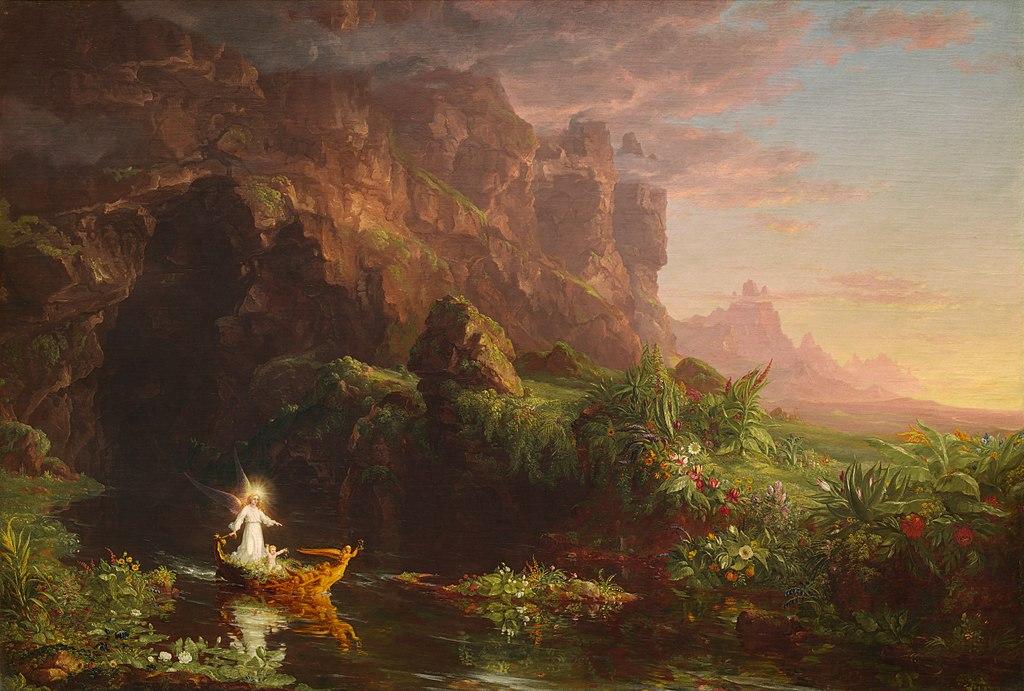



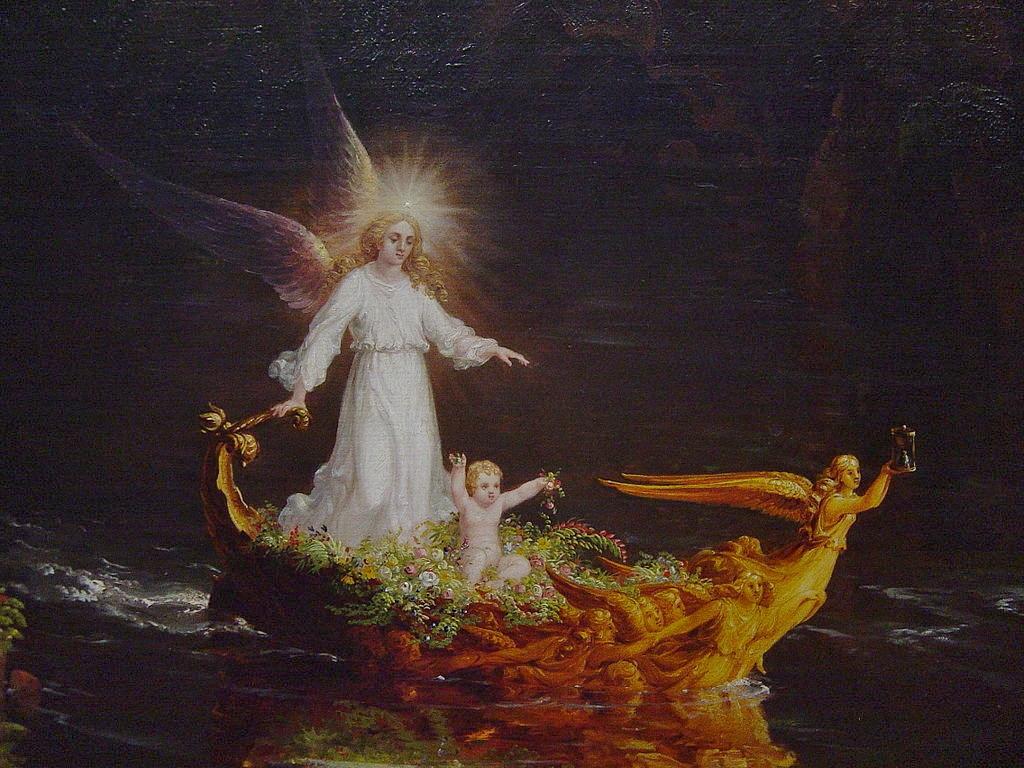
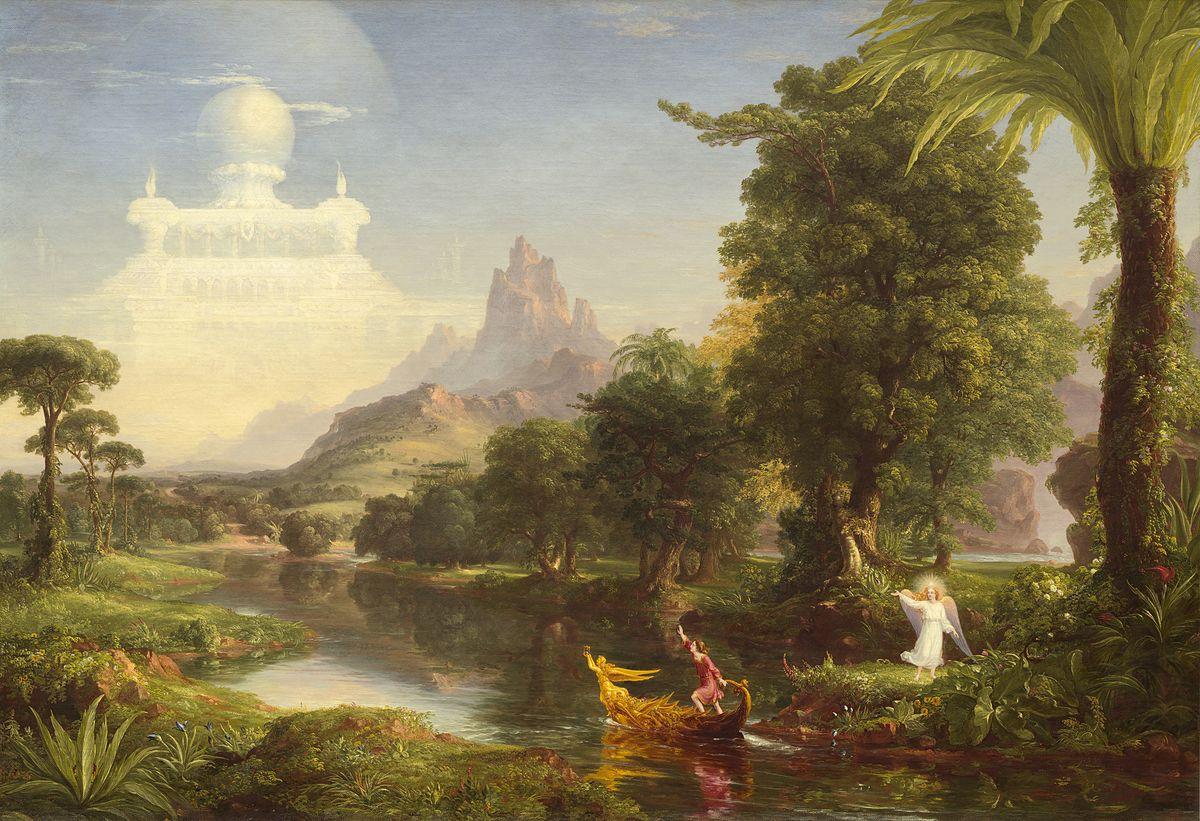
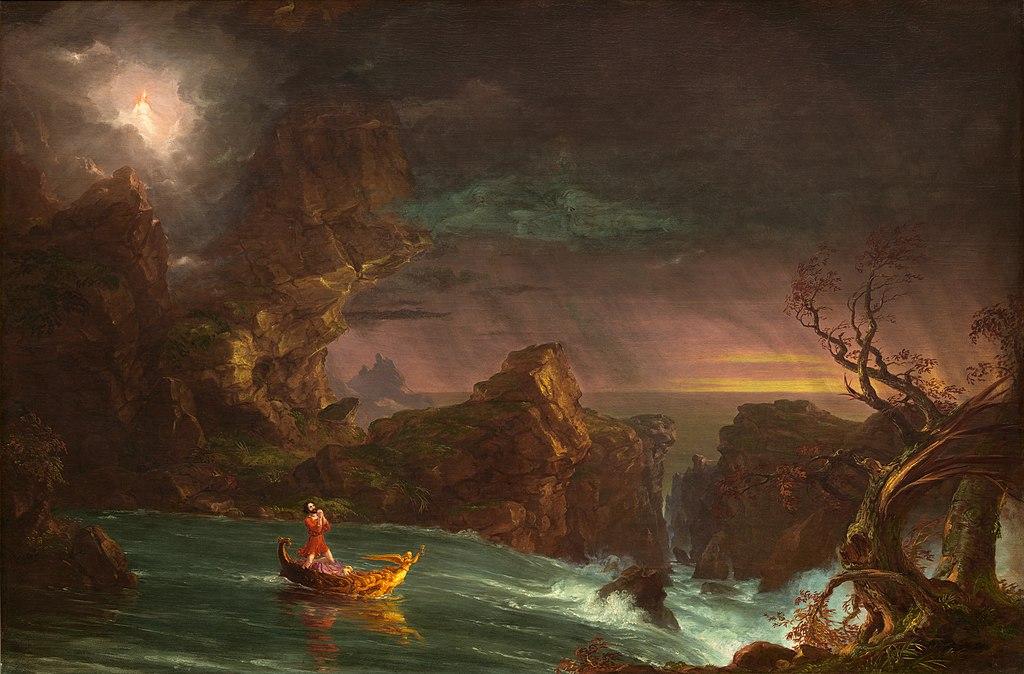
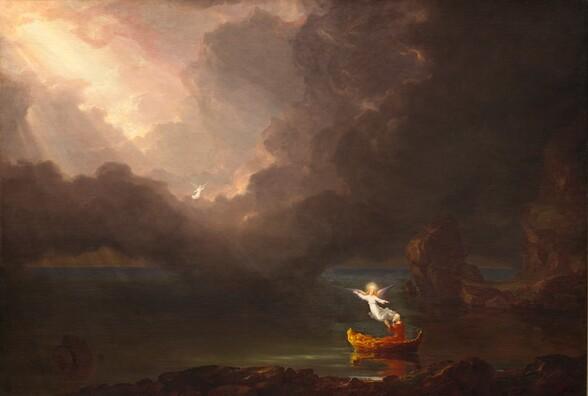
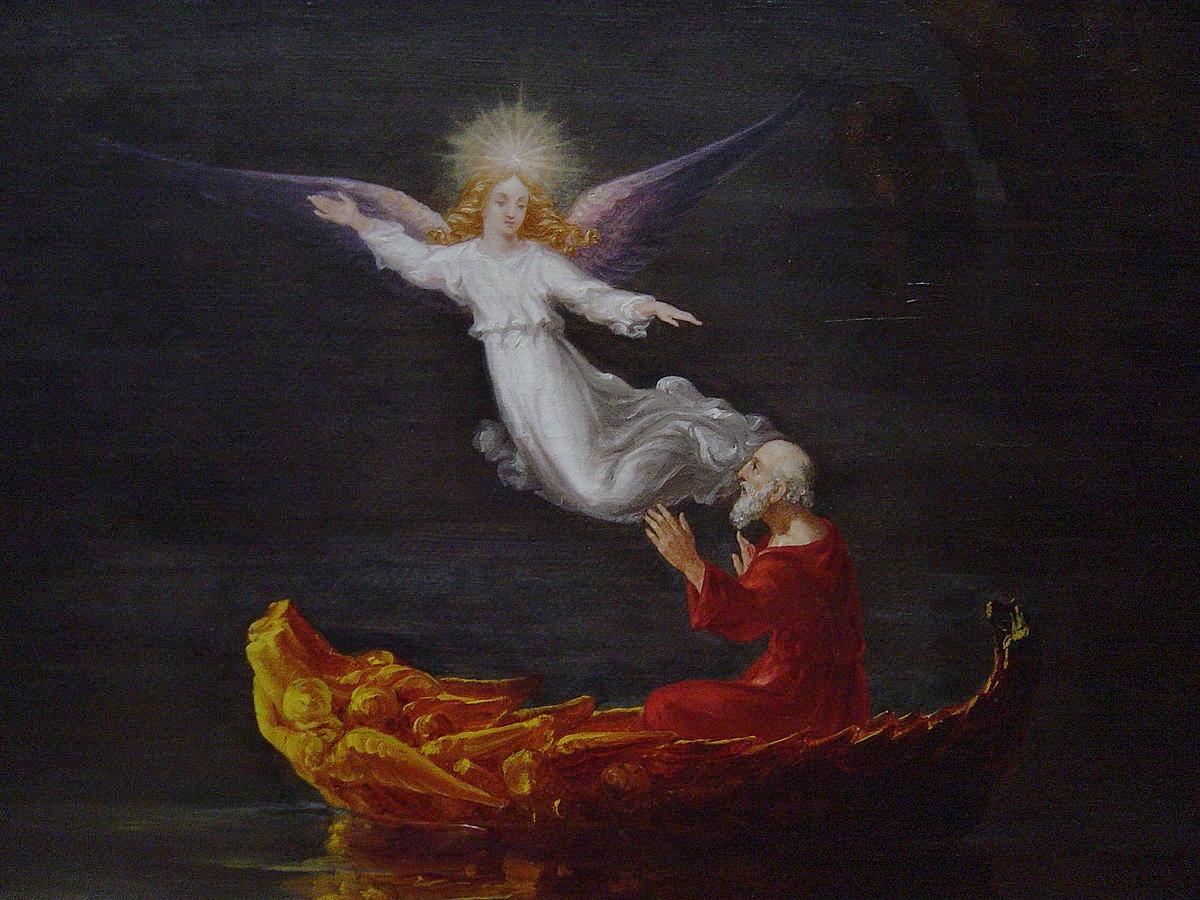
Write a Letter to the Editor on this Article
We encourage readers to offer their point of view on this article by submitting the following form. Editing is sometimes necessary and is done at the discretion of the editorial staff.